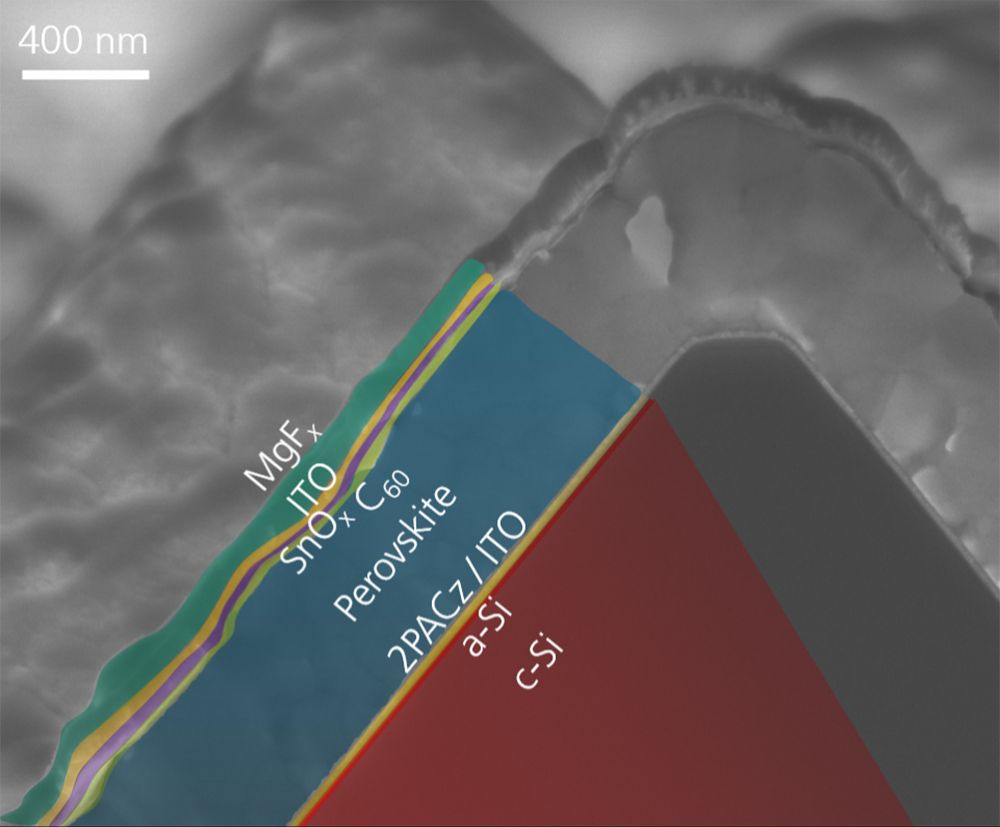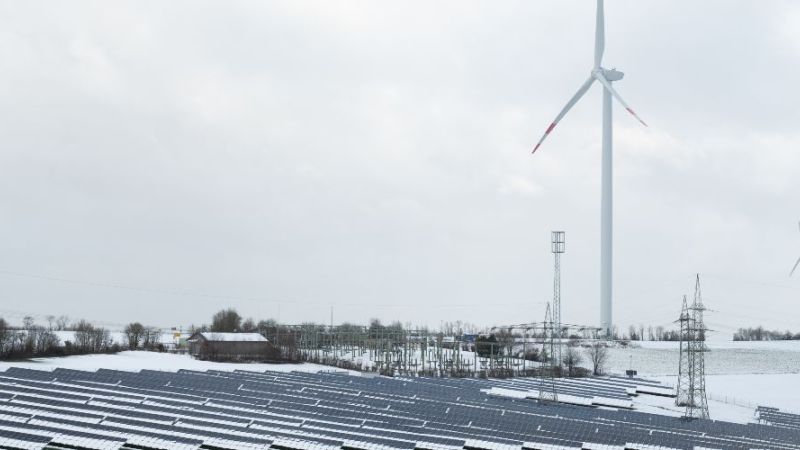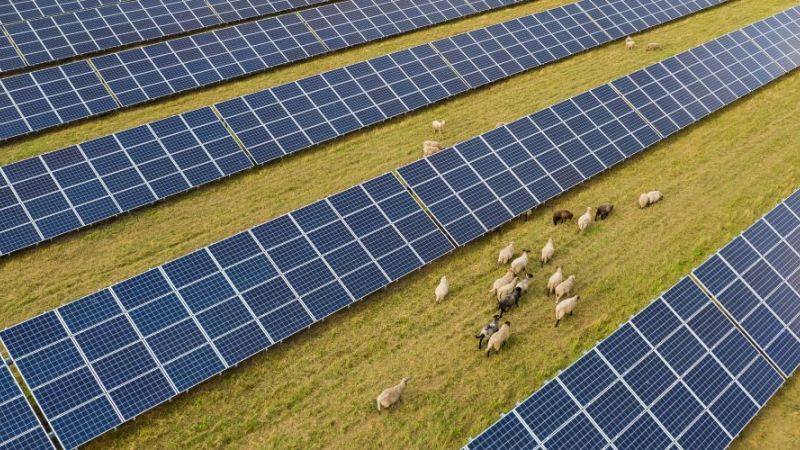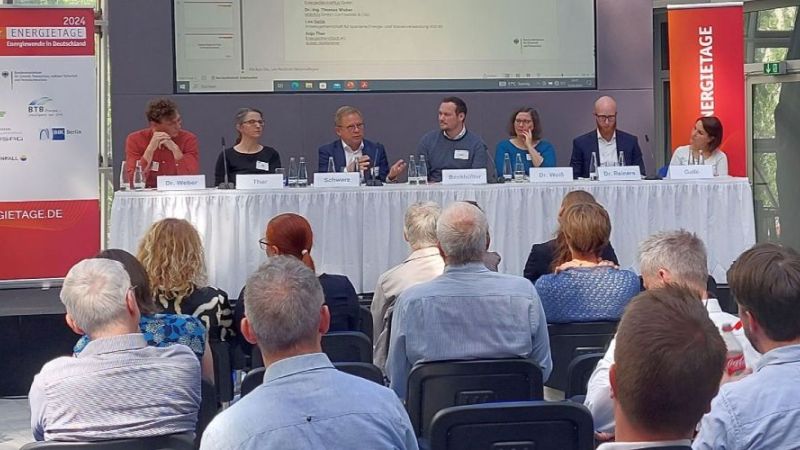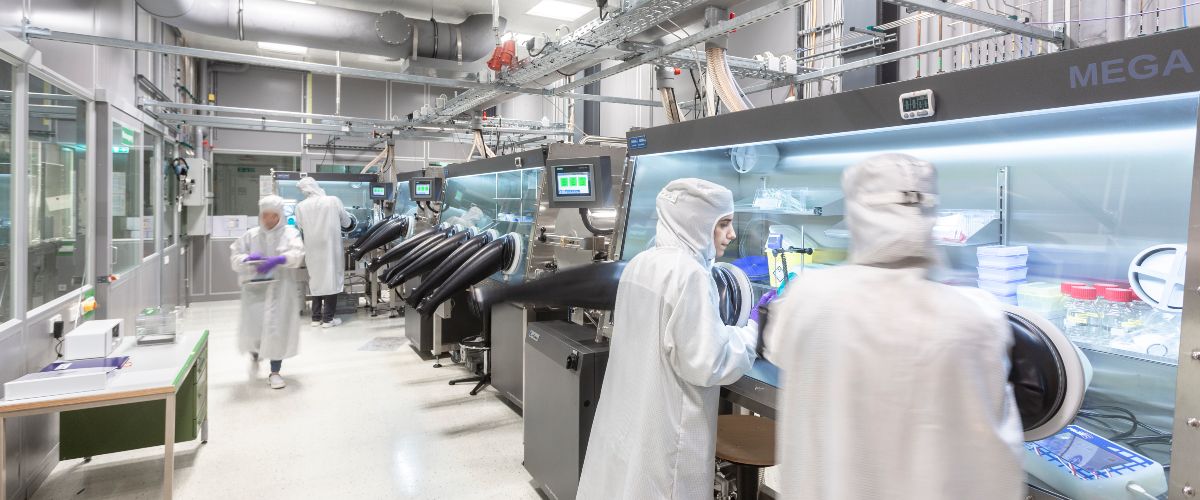 © Fraunhofer ISE
© Fraunhofer ISE
Photovoltaics
Manufacturing tandem solar cells on an industrial scale
Tandem solar cells made of the materials perovskite and silicon can already achieve efficiencies of over 30 percent under laboratory conditions. Two recently launched research projects are currently working to advance the scaling of perovskite-silicon tandem photovoltaics to an industrial scale.
In recent years, researchers have continuously developed crystalline silicon solar cells and achieved increases in efficiency. However, the maximum technologically achievable limit is an efficiency of about 27 percent. That is the reason why scientists are researching tandem solar cells, which combine different solar cell materials and thus enable higher efficiencies. The combination of the materials perovskite and silicon offers promising potential here. Research institutions regularly report new efficiency records. As a rule, however, these are established under laboratory conditions on relatively small surfaces (about one square centimetre). Thus, these laboratory cells are only a fraction - about 400 times smaller - of the wafer size of a current, industrially produced silicon solar cell.
This is where the two recently launched research projects Pero-Si-SCALE and LiverPool of the Fraunhofer Institute for Solar Energy Systems ISE come in. In the projects, science teams are investigating different ways to enable scalable and economical production of perovskite silicon tandem solar cells. Both research projects are funded by the Federal Ministry for Economic Affairs and Climate Action (BMWK).
New technology platform bundles knowledge
Within the framework of Pero-Si-SCALE and LiverPool, scientists are building a technology platform. The researchers' goal is to analyse cell and module designs and develop them further for industrial production. In this way, progress from research is to be quickly transferred into practice.
The Pero-Si-SCALE platform combines the establishment and development of processes, technologies and competences. Those are necessary so that perovskite silicon solar cells can be manufactured and tested on the industrial wafer format M12. "For this purpose, we are building a process line by the end of 2024," says Dr Martin Hermle, head of the two projects at Fraunhofer ISE. The platform will include vacuum deposition equipment and wet chemical coating processes for the perovskite subcell. According to Hermle, at the module level, a next-generation industrial adhesive stringer will be available for the development of the manufacturing processes, as well as a luminescence system for process control of the interconnection process.
Vacuum technology for perovskite silicon tandem solar cells
In the LiverPool project, the science team is also pursuing the goal of developing vacuum-based evaporation methods for perovskite materials and contact layers that can be implemented industrially.
Therefore, the Pero-Si-SCALE platform focuses on such evaporation processes as well in order to be able to apply the perovskite subcell to the silicon subcell. The process commonly used so far for laboratory cells (wet chemical spin coating) is not suitable for scaling up to industrial substrate sizes. (av)

